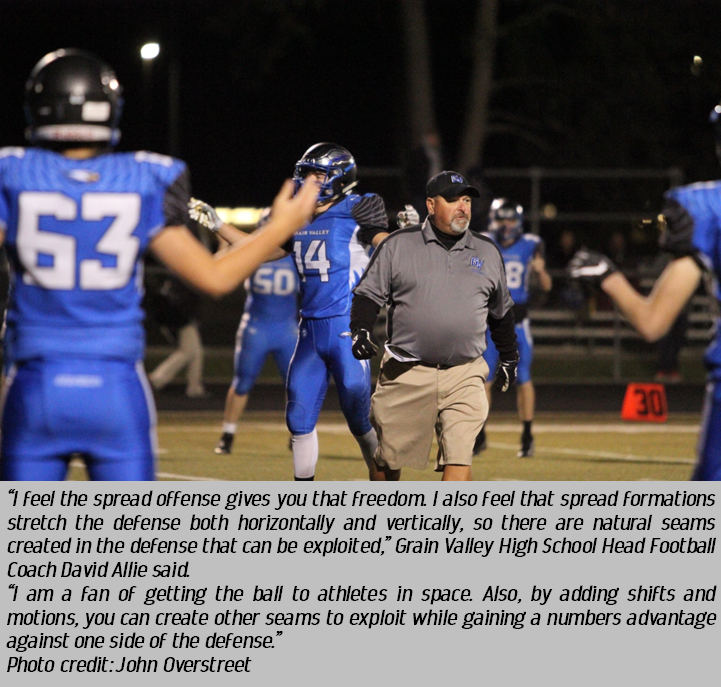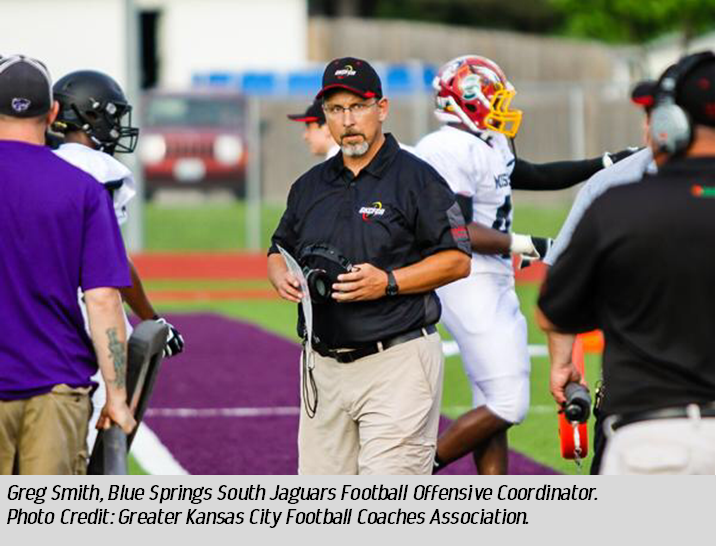|
|
by John Unrein The evolution of moving the football down the field has changed dramatically over the last 70 years. Especially, since 1980. Statista online reveals that the average passing yards per National Football League game from 1970 to 1979 was 156 yards per game. The rushing average per game in the NFL during the same decade was 139 yards per game.
Fast forward to the recently completed decade (2010-2019) and passing yards per game in the NFL have increased significantly while rushing yards have declined moderately. From 2010 to 2019 the average passing yards per game in the NFL grew to 234 yards. An increase of 78 yards per game over the 1970’s. Concurrently, the average rushing yards per game in the NFL from 2010 to 2019 was 113 yards a game. A mild drop of 26 yards per game. The Kansas City Chiefs averaged 379 yards and 28 points per game during the regular season in route to their Super Bowl win over the San Francisco 49ers. This permitted the Chiefs to rank sixth in total yards (6,067) in the NFL during the 2019 season. The Chiefs run a West Coast Spread Offense. Chiefs Head Coach Andy Reid has overseen the progression of this offense grow from his assistant coaching days with the Green Bay Packers through head coaching stints with the Philadelphia Eagles and Kansas City Chiefs. It is easy to pontificate as to why these offensive statistics have migrated in the direction they have. Quarterbacks are protected now more than they ever have been in football. Rules favor the offense regarding pass interference and defensive holding penalties. Practice time in pads has been reduced for player safety that lessens the amount of time offensive lineman get to practice the physicality of run blocking fundamentals. The list goes on. One element that should not be overlooked that helps explain the point explosion and offensive growth in the passing game of football is the spread offense. A football field is 160 feet or 53 and 1/3 yards wide and 300 feet or 100 yards between goal lines. That is a tremendous amount of space for a defense to have cover horizontally and vertically on the field. The implementation of three, four, and five wide receiver offensive formations pulls defenders out of the tackle box (the area on the line of scrimmage between the offensive tackles). Spread formations also permit offensive coaches to align players against defenders creating favorable matchups that can be exploited. Not to mention, the running lanes created for the offense in the way the defense adjusts to cover receivers. This often leads to quarterbacks and coaches at all levels of football doing simple math prior to the snap. It comes down to counting the number of defenders inside and outside of the tackle box. A quarterback or the offensive coordinator from the sideline may audible to a running play because they outnumber the defense in the tackle box, giving them an advantage rushing the football. A passing advantage may also be found pre-snap for the offense due to a defender covering a preferred receiver by defensive alignment. This may include a linebacker matched up unfavorably against the speed and athleticism of a wide receiver. Furthermore, a safety can be pulled to the three receiver side of an offensive formation leaving a ton of real estate in the middle of the field or on the backside of the offense. Offenses all the way down to the high school level tend to have multiple route concepts (four verticals, flooding a zone with multiple receivers, running a rub route with two receivers to wall of a defender, etc.) they prefer to run against various defensive man and zone coverages. The game continues to migrate towards who can manipulate the use of space better, achieve more possessions in a game, and finding the fastest way to score points. Football in Eastern Jackson County boasts two coaches with more than 50 years of combined experience coaching high school football. David Allie is the head football coach of the Grain Valley Eagles. Greg Smith is the offensive coordinator for the Blue Springs South Jaguars. Both Allie and Smith are close friends, believe in the spread offense, and have paid their dues to win accolades and respect within the football coaching community. Allie took over the reigns of the Grain Valley Eagles Football program in 2014 after spending fourteen previous years at Raytown South High School as their head coach (including leading the Raytown South Cardinals squad to the 2009 state championship game). Allie was also recognized as the Kansas City Chiefs 2016 Missouri High School Coach of the Year while at Grain Valley and is fresh off leading the Eagles to the Class 4, District 7 Championship last season. Smith helped the Jaguars offense accumulate an average of 25.8 points a game in his first season at Blue Springs South. The Jaguars were also able to boast success late in the season with a Class 6 state playoff win over Holt. Smith has enjoyed previous achievement as a head coach at Plattsburg, Smithville, and Pleasant Hill, guiding each of those programs to playoff wins. Smith was rewarded for his efforts in 2018, when he was inducted into the Missouri High School Football Coaches Hall of Fame. Both Allie and Smith offered their thoughts on football’s spread offense as it continues to evolve. “I don’t know if what we do is exactly the spread offense, but more a hybrid of philosophies. I’m a firm believer in running offensive schemes that fit the team’s personnel, not just dedication to a scheme regardless,” Allie said. “During my high school days, we ran the I-formation. At Raytown South as an assistant coach, we ran the I, and when I first took over as head coach there I was fascinated with and installed the Wing-T formation. However, the best traditional Wing-T teams always have a good tight end and I have not always been able to find one.” “Because some teams lack a tight end, and as offensive philosophies have generally evolved, many Wing-T concepts were adopted and morphed into spread formations.” Allie continued, “At Grain Valley and Raytown South we have not always been blessed with great size up front, but we have had quickness and athleticism. Spread formations can be adapted to use a variety of different running schemes.” “Elements of deception from the Wing-T and athleticism of the group you coach can be utilized to confuse the defense in the spread offense. It is also a very fan friendly offensive scheme – as these formations are what spectators see during college and pro games, and can provide offenses with big play potential, which leads to scoring more points.” The journey to the spread offense for Smith was one born more out of necessity. “My team had suffered some injuries in key positions which led us to make the change in season. What I found to be true was that the spread concepts matched well with my philosophies and there was more space on the field because the defense was forced to spread out as well,” Smith said. Both Allie and Smith are old school in the splendor of observing battles in the trenches that result in positive rushing yards for an offense. Neither is oblivious to the benefits gained by making the opposing defense stretch to account for offensive players lined up all over the field. “I’ll have to admit, it is a thing of beauty to watch six or seven enormous lineman stand foot to foot while the quarterback hands off the football to a bruising 220 pound running back only to see the entire vanguard march down the field destroying everything in its path,” Allie said. “Unfortunately, I have never had the players to do that, so I try to adapt our scheme to what we have. I feel the spread offense gives you that freedom. I also feel that spread formations stretch the defense both horizontally and vertically, so there are natural seams created in the defense that can be exploited.” “I am a fan of getting the ball to athletes in space. Also, by adding shifts and motions, you can create other seams to exploit while gaining a numbers advantage against one side of the defense.” Smith agreed, “In my opinion, one of the most difficult things to do in the sport of football is tackling in the open field. By spreading the defense out and forcing them to defend the entire width of the field, it forces defenders to do exactly that.” “Offensively, we try to manipulate the ‘box.’ By the offense taking a player out of the box, whether it is tight end, running back, or both; the defense is forced to match that movement. This spreading out the defense allows for better running lanes for the ball carrier.” “If the defense does not spread out to match the formation, it gives the offense an advantage in the passing game. Essentially, spreading out the offensive formation puts certain defenders in a conflict, giving the offense the advantage.” The spread offense may sound like a no brainer for coaches looking to seek a winning edge. There are things that must be considered that are not always apparent on the surface if the move is made away from football’s traditional offenses. Any offensive line coach in the spread offense will likely tell you their number one stress is finding a player that can execute the shotgun snap consistently. Coaches like having their five best offensive lineman play up front and be plugged into a position. The spread offense may consist of one player who can get the shotgun snap back to the quarterback without sailing over his head, or dribbling along the ground, and their four other best offensive linemen. In a perfect world, one of your five best offensive lineman overall can also perform the shotgun snap successfully on a consistent basis. The spread offense also requires a team to be in great shape if they are going to get off a play every thirteen seconds after the ball is spotted for play by an official. Teams must commit to practicing and conditioning this way if they want to gain offensive possessions during a game to score more points. Quarterbacks must learn the skill of seeing the ball into their hands by feel or with their peripheral vision to gain the advantage of reading a defense down field on a pass play or the defensive end man on the line of scrimmage if they are to read what he’s doing prior to deciding to hand off the football (on a read option run). Additionally, quarterbacks must develop a clock on how long they can hold the football before it must be gone on a passing play. Typically, that’s four seconds or less. Something that is done naturally when a quarterback lines up under center and performs a three or five step drop. The quarterback knows the ball should be out of their hand when the last step in their drop is completed. This meshes well with the natural time it takes for wide receivers to get into their routes. “The quarterback can survey the defense more cleanly lined up in shotgun. In the modern game of quarterback reads and RPO’s, the extra 4 to 5 yards of depth give the quarterback good angles of vision to make the decision to stress read defenders,” Allie said. “We allow our quarterback to survey the defense and make audibles based on their (the defenses) alignment to the play we have called, again looking to put our players in the best position to be successful. I also feel it makes it easier for the quarterback in the passing game because there is more time to see the overall coverage schemes for both pre and post snap reads and footwork is easier in drops.” Allie concluded, “the big disadvantage is the potential for error on the snap. The snap must be consistent, and the quarterback has to make sure he handles whatever ball comes to him. Adding weather issues like rain or snow creates another obstacle. Our centers and quarterbacks need to have reps snapping before, during, and after practice to make sure snaps are not an issue.” “Another disadvantage is that the deceptiveness of the quarterback hiding the ball from the defense is almost nil in the shotgun. You have to find ways to be deceptive, but that is much more difficult than the quarterback turning around from under center with his back to the defense hiding the football.” Smith concurred with Allie’s assessment on the advantages and disadvantages of the shotgun. “The biggest advantage to the shotgun is that it increases the quarterback’s ability to see the defense. From the snap of the ball to the completion of the play, the quarterback is able to have the entire defense in his line of vision. Another advantage to the shotgun is time. The moment that the quarterback catches the snap, he is immediately at a depth that would take a quarterback at least three steps to attain if he were under center,” Smith said. “The major disadvantage of the shotgun is the center-quarterback exchange (the snap). The exchange is less consistent than if the quarterback was under center. This inconsistency is magnified if there are adverse weather conditions. Another disadvantage is short yardage situations. The actual football must physically travel backwards five yards before moving forward. That is not ideal in a fourth-and-one situation, or on the goal line.” The final thoughts Allie and Smith shared were regarding two universal truths about football, being up tempo offensively can wear down your opponent and the game of football is still won or lost at the line of scrimmage, even in the era of the spread offense. “Coach Smith likes to be up tempo all the time. I like to use it situationally. It creates an advantage in that you usually see a more generic defense as they don’t have time to huddle, substitute personnel, or stem and blitz,” Allie said. “However, listening to Coach Carpino (Grain Valley’s Defensive Coordinator), if the offense is unsuccessful by having a quick ‘three and out,’ it makes your own defense have to be on the field longer without needed rest, which actually is the opposite of the goal and hurts your own team.” “We like to use up tempo for a series of plays (usually scripted, but sometimes a whole series), especially after a turnover, to gain advantage over a tired opponent, and to change momentum or ignite some excitement.” Smith provided the final word with his thoughts, “The sport of football is very intricate with a lot of moving parts on every play. As complicated as we try to make it as coaches, the game really comes down to two basic things: blocking and tackling.” “In addition to that, most games are won or lost in two major areas: winning the line of scrimmage and the turnover battle. It doesn’t matter what offensive philosophy you use, winning at the line of scrimmage is the key to having a successful offense. Your team is going to struggle to score points if the offensive line is unable to create creases for the ball carrier in the run game of if they can’t keep the defense from hitting the quarterback in the passing game.” Comments are closed.
|
Categories
All
Archives
July 2024
|
Grain Valley NewsGrain Valley News is a free community news source published weekly online. |
Contact Us |



 RSS Feed
RSS Feed
